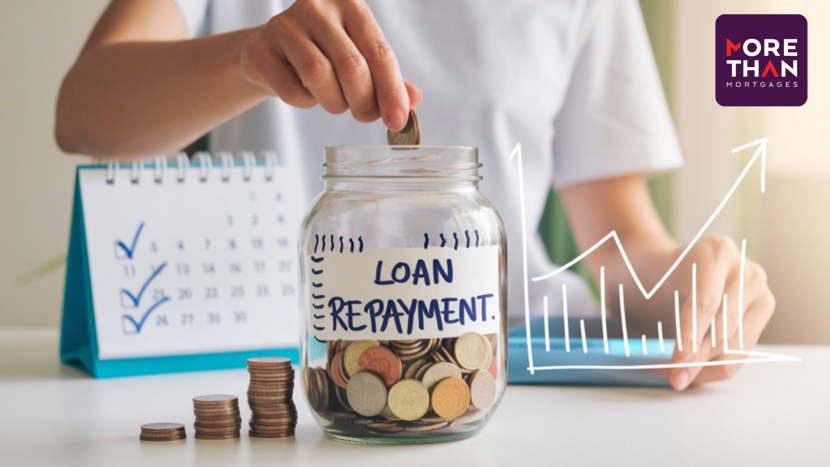Loan amortisation is just a fancy way of saying “paying off a loan bit by bit over time.”
When you take out a home loan, you’re borrowing a big chunk of money (the principal) from a lender. In return, they charge you interest for using their money. Instead of paying it all back in one go (which would be impossible for most people), you make regular repayments—usually monthly.
How Do Repayments Work?
Each repayment you make is split into two parts:
- Interest – The bank’s “thank-you fee” for lending you money.
- Principal – The actual amount you borrowed.
At the beginning of your loan, most of your payment goes towards interest because your loan balance is still high. Over time, as you keep chipping away at the principal, the amount of interest you owe gets smaller. Eventually, more of your repayment starts going toward paying off what you actually borrowed.
Example in Real Numbers
Say you borrow $500,000 at 6% interest over 30 years. Your monthly repayment will be around $3,000.
- In the first few years, a big chunk of that $3,000 is paying interest (let’s say around $2,500), and only a small part is reducing your loan balance ($500).
- After 10–15 years, more of your payment starts going toward paying off the principal, so your loan balance starts shrinking faster.
Why’s that? I hear you ask. Great question! The reason more of your payment starts going toward the principal after 10–15 years (or as time goes on) is because of how loan interest is calculated. I’ll explain more on that below. Or if you’re impatient, jump to here. By the last few years, most of your payment is going toward clearing your remaining loan balance, with only a small amount going to interest.
Why Does This Matter?
- If you make extra repayments early on, you reduce the loan balance faster and end up paying less interest overall.
- If you refinance, you might get a better rate, which means less of your payment goes toward interest.
- Knowing how amortisation works helps you see that even though you’re paying the same amount each month, the way it’s applied changes over time.
At first, it feels like your loan isn’t shrinking much, but stick with it, and you’ll see the balance drop faster in the later years!
How Interest Works on a Home Loan
Interest on a home loan is calculated daily based on the remaining loan balance (principal). This means:
- The higher your loan balance, the more interest you’re charged.
- The lower your loan balance, the less interest you’re charged.
What Happens Over Time?
- In the early years of your loan, your balance is high, so the interest charged each month is also high. Since your total repayment amount stays the same, most of your payment goes toward covering that interest, leaving only a small portion to reduce the loan balance.
- As you make repayments, your loan balance starts to go down, even if it’s slow at first. Because interest is based on the remaining balance, the amount of interest charged each month gradually decreases.
- Since you’re paying less interest each month, more of your repayment can now go toward reducing the actual loan balance (principal).
Example to Make It Clearer
Let’s say your loan repayment is $3,000 per month and you have a $500,000 loan at 6% interest. Remember, the repayment stays the same, regardless of what’s owing on your loan.
Year 1 (Loan balance is high)
- Interest charged that month: $2,500
- Principal repaid: $500
- Loan balance after payment: $499,500
Year 10 (Loan balance has reduced)
- Interest charged that month: $2,000
- Principal repaid: $1,000
- Loan balance after payment: $420,000
Year 20 (Loan balance is much lower)
- Interest charged that month: $1,000
- Principal repaid: $2,000
- Loan balance after payment: $150,000
By the final years of the loan, most of your payment is going directly to the principal, making your balance drop much faster than in the beginning.
The Key Takeaway
Because interest is based on the remaining loan balance, and that balance is getting smaller with each payment, interest costs naturally decrease. This frees up more of your repayment amount to go towards reducing your actual debt, speeding up the pay-down process in the later years.
This is why making extra repayments early link the smash 10 years off your mortgage blog here can help you pay off your loan faster and save thousands in interest—because it reduces your balance sooner, meaning less interest is charged over time!
#HomeLoans #LoanRepayment #MortgageTips #DebtFreeJourney #LoanAmortisation #FinancialFreedom #MoreThanMortgages

